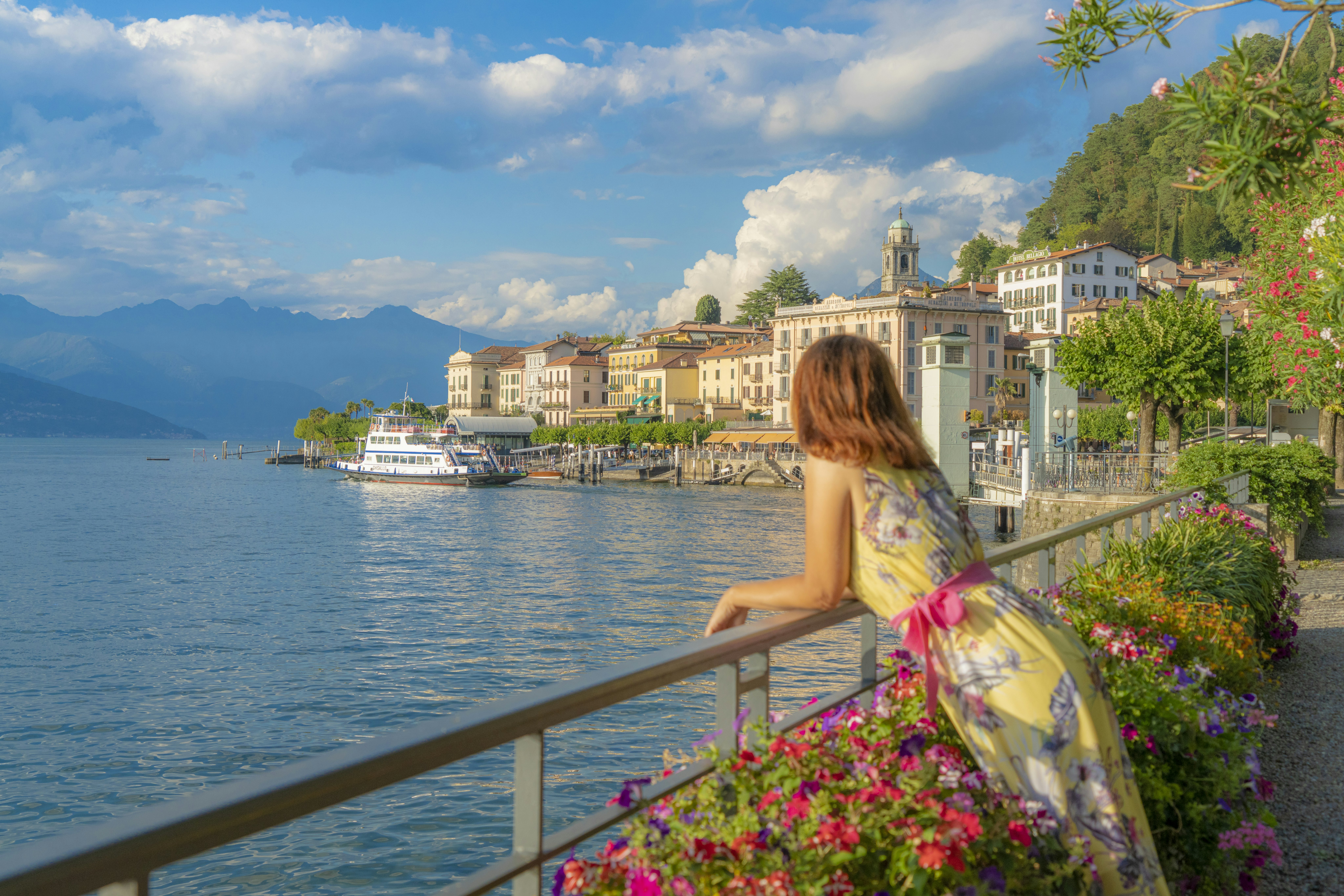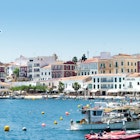With its iconic monuments, timeless landscapes and irresistible food, Italy is one of Europe’s most alluring destinations. Its historic cities promise thrilling art and architecture at every turn while its varied coastlines and Alpine heights provide a stunning outdoor playground.
In fact, the country is so packed with possibilities that it can seem almost overwhelming. Where should I go? How do I get there? How much will it cost? This planning guide tackles these questions and provides clear practical advice on how to get the most out of your first Italian trip.

When should I go to Italy?
The short answer is anytime. Spring and fall are best for sightseeing, touring, and seasonal food. It’s warm without being stifling and nature is in full color. But with the glorious blue-sky weather come crowds and high-season prices in the main cities.
Summer sees cities empty as holidaymakers head to the coast. Prices skyrocket in popular areas, peaking in mid-August when beaches are packed and resorts full. Meanwhile, the festival season swings into gear with high-profile events such as Il Palio di Siena, featuring a wild bareback horse race around Siena's Piazza del Campo, and Spoleto’s Festival dei Due Mondi, with musicians, artists and actors performing to passionate throngs.
Winter is generally quiet – except in ski resorts – and it can be wet and cold. But low season rates and empty museums make it a decent option for a city break.
How much time do I need to visit Italy?
Realistically, you’ll need at least two or three days in top cities such as Rome, Florence and Venice. That won’t give you enough time to cover everything but it will allow you to get a feel for the place and explore some of the headline attractions.
If you’re happy to move fast, you could cover Italy’s highlights on a whistle-stop 10-day tour. That would give you a couple of days each in Venice and Florence, a day in Bologna, Pisa and Naples, and three days in Rome. Alternatively, you could focus on a particular area. For example, with a week you could explore southern Tuscany and parts of neighboring Umbria, or cut a swathe through Sicily’s baroque southeast.

Is it easy to get in and around Italy?
Italy is well served by air with flights from across the world. Major airports include Rome Fiumicino (officially Leonardo da Vinci) and Milan Malpensa, the two main intercontinental gateways, Venice Marco Polo, Pisa International (for Florence and Tuscany), Naples International, and Catania (Sicily’s busiest airport). There are also excellent rail and bus links, especially to northern Italy, and ferries to Italian ports from across the Mediterranean.
Once in Italy, trains are best between major cities and along the coasts, while buses are better for the mountains and hilly inland areas. For more remote parts you’ll really need your own wheels. Most major cities have decent public transport, though you can often cover their historic centers on foot.

Top things to do in Italy
Tour Rome’s greatest hits
First port of call for many travelers is Rome, Italy’s charismatic capital. You’ll never be able to cover all of its monuments and masterpieces but there are some you won’t want to miss. The Colosseum and Pantheon are obvious highlights, along with the Roman Forum and Palatino. Then there’s the Vatican where you’ll find St Peter’s Basilica and the Sistine Chapel (in the Vatican Museums). And, of course, you’ll want to toss a coin into the Trevi Fountain to ensure you return to the Eternal City.
For a taste of authentic Roman cuisine, try a slice of pizza from Forno Roscioli or a pasta carbonara at Flavio al Velavevodetto in the Testaccio neighborhood.
Marvel at masterpieces in Florence
One and a half hours north of Rome by train, Florence is the second of Italy’s ‘big three’ (Venice completes the trio). Visitors have been rhapsodizing about the city for centuries and still today it thrills with its Renaissance palazzi (palaces), frescoed churches and artworks such as Michelangelo's David at the Galleria dell'Accademia, Botticelli’s Birth of Venus at the Galleria degli Uffizi, and Brunelleschi’s red dome atop the landmark Duomo. Art apart, there are markets and boutiques to explore and Negroni cocktails to be sampled, including at the historic Caffè Rivoire.
With more time, you could add a day-trip to Siena or a tour of the Chianti wine country.

Get lost in Venice’s backstreets
As soon as you set foot in Venice you know it’s special. And confusing. To get your bearings take vaporetto (water bus) No 1 along the Grand Canal to Piazza San Marco where you’ll find several landmark sights. Chief among these are the Basilica di San Marco and the Gothic Palazzo Ducale, former residence of the ruling Doge. Elsewhere, you can catch modern art at the world-class Peggy Guggenheim Collection and browse colorful produce at the centuries-old Rialto Market.
To fuel your wanderings, Venice is famous for its cicchetti (bar snacks). A top spot for these is the canal-side Bracaro ae Bricoe bar in the Cannaregio sestiere (neighborhood).
Feast on pizza, art and street life in Naples
With Mt Vesuvius brooding on the horizon, Naples is sprawling, loud, sometimes edgy, and often magnificent. Its Dickensian backstreets are a joy to explore and its regal palaces showcase world-class collections of Greco-Roman antiquities and baroque art – check out the Museo Nazionale Archeologico and Cappella Sansevero for a glimpse. Then, of course, there’s the city’s revered pizza, served at historic pizzerias such as Da Michele.
Beyond the city, Pompeii is an easy day trip and the Amalfi Coast is within striking distance via the sunny resort town of Sorrento.

Cruise the Italian Lakes
Ringed by brooding Alpine summits and steep wooded slopes, the Italian Lakes have been a popular holiday spot since ancient times. At Lake Maggiore, you can explore the Isole Borromee with their ornate palaces and lavish gardens, while further east you can go celeb-hunting on Lake Como, cruising around its exquisite villas and villages.
To reach the lakes you’ll often have to pass through Milan, Italy’s northern powerhouse. A day here would be enough to take in some of its signature sights: Leonardo Da Vinci's Last Supper, the fairy-tale Duomo, the Quadrilatero d’Oro shopping district.
My favorite thing to do in Italy
As much as Italy’s obvious beauty and blockbuster sights, what I love are its simple pleasures: a leisurely lunch in a favorite trattoria, the sight of pine trees towering over Roman ruins, a glass of prosecco on a Venetian canal-side.
I also love wandering around Rome and seeing how its life plays out against a backdrop of ancient monuments and historic palazzi. There’s always something going on and even without trying I usually come across something special, an amazing baroque fountain or a teeming market in a medieval square. The city’s streets really are an experience in themselves. I mean where else can you wait for a tram just yards from where Julius Caesar was stabbed?

How much money do I need for Italy?
Italy isn’t cheap. Accommodation rates vary enormously between places and seasons but prices are universally high in popular destinations. That said, you can still find deals if you book early and avoid peak periods. Sightseeing can also add up with top sites charging top dollar. On the plus side, eating out doesn’t have to cost the earth, especially if you stick to pizza and gelato.
Some average daily costs:
- Double room in an agriturismo (farm stay) €40-80
- B&B room €60-140
- Coffee (standing at a bar) €1.10
- Midrange meal €25-35
- Glass of wine €5-8
- Museum admission €10-20
- Public transport ticket (Rome) €1.50 for 100 minutes unlimited travel (but only one metro ride)
- High-speed train ticket Rome to Florence €55

Frequently asked questions
This is Italy, so do I have to dress up all the time?
In a word, no. When sightseeing go for comfort, especially when it comes to shoes – you’ll be walking a lot and cobbled streets can be murder on the feet. Note also that major religious sights often enforce dress codes, so make sure you can cover your shoulders, torso and thighs. For going out in the evening, smart casual is the way to go.
What’s the score with tipping?
Tipping is not strictly necessary in restaurants as most places add servizio (service) to the bill. If they don’t or if you want to leave something, a few euros is fine in pizzerias and trattorias; 5% to 10% in smarter restaurants.
What’s this about not drinking a cappuccino after 11am?
Italy has a whole (unwritten) rule book on the dos and don’ts of drinking. As a foreign visitor you’ll get a pass if you order the wrong drink at the wrong time, but it helps to know that Italians regard cappuccinos as breakfast drinks, call an espresso un caffè, and drink beer with pizza.
What’s the card vs cash situation?
Businesses are legally obliged to accept digital payments but it’s always best to have some cash on you. You probably won’t have any problems but it’s not unheard of for payment machines to be mysteriously broken in smaller bars, shops, museums or restaurants. Major credit cards are widely accepted (Amex less so).
.jpg?auto=format&w=64&h=64&fit=crop&crop=faces&q=75)














